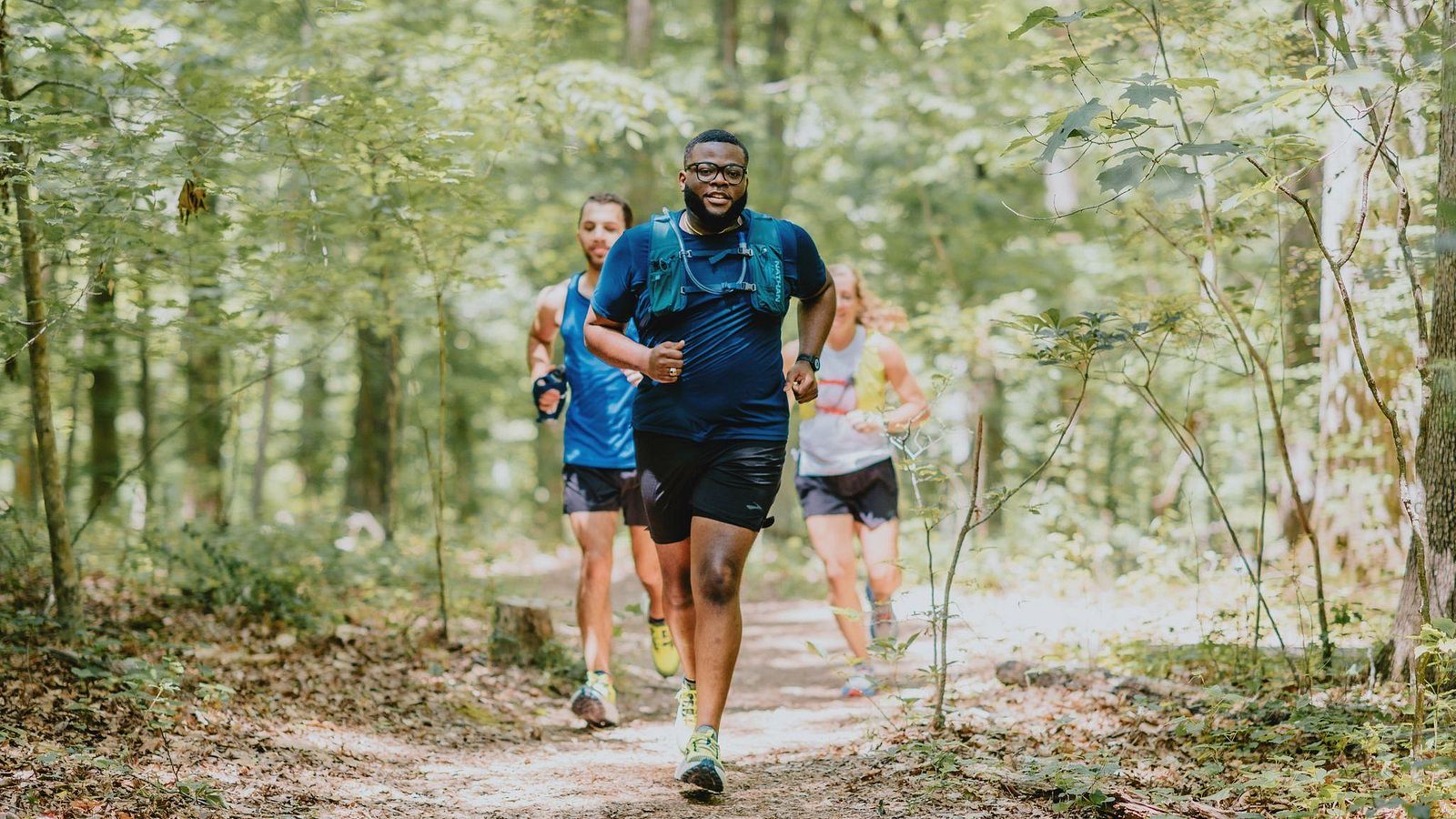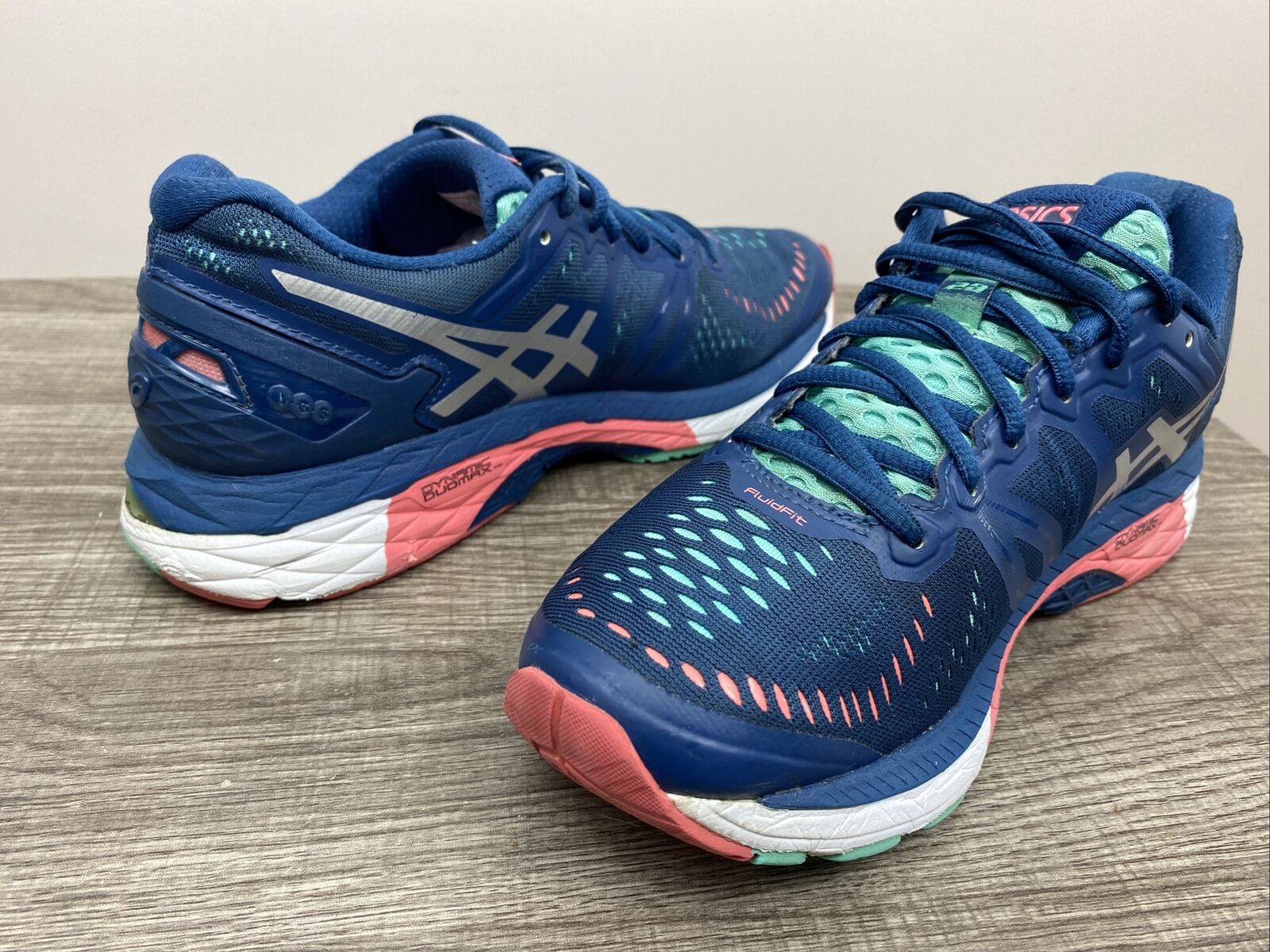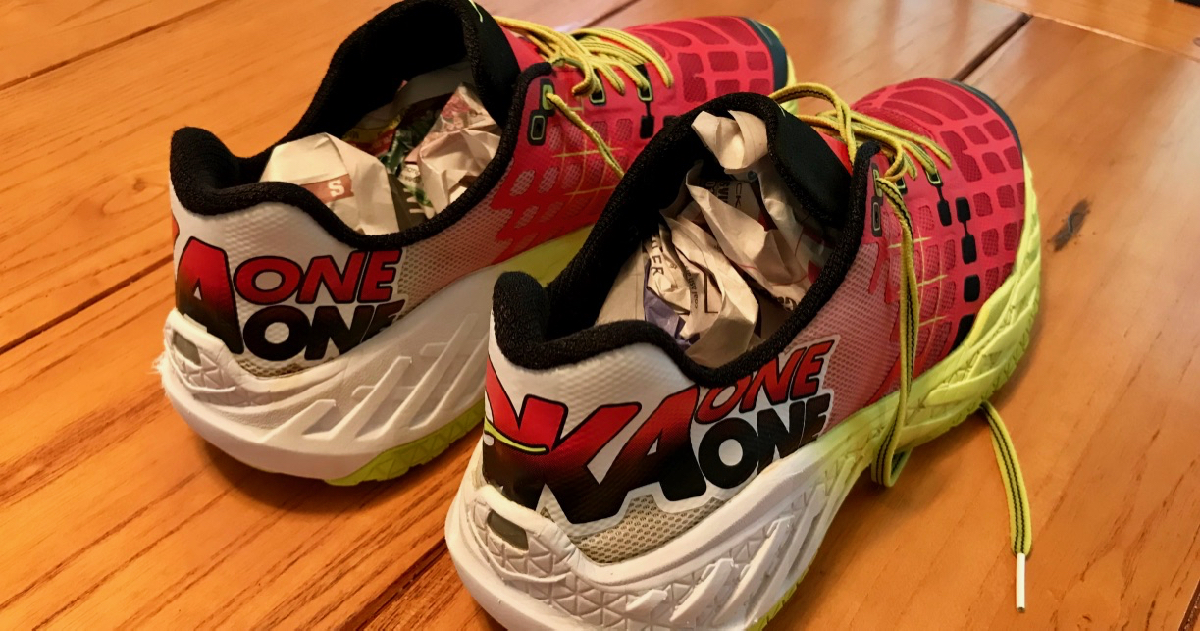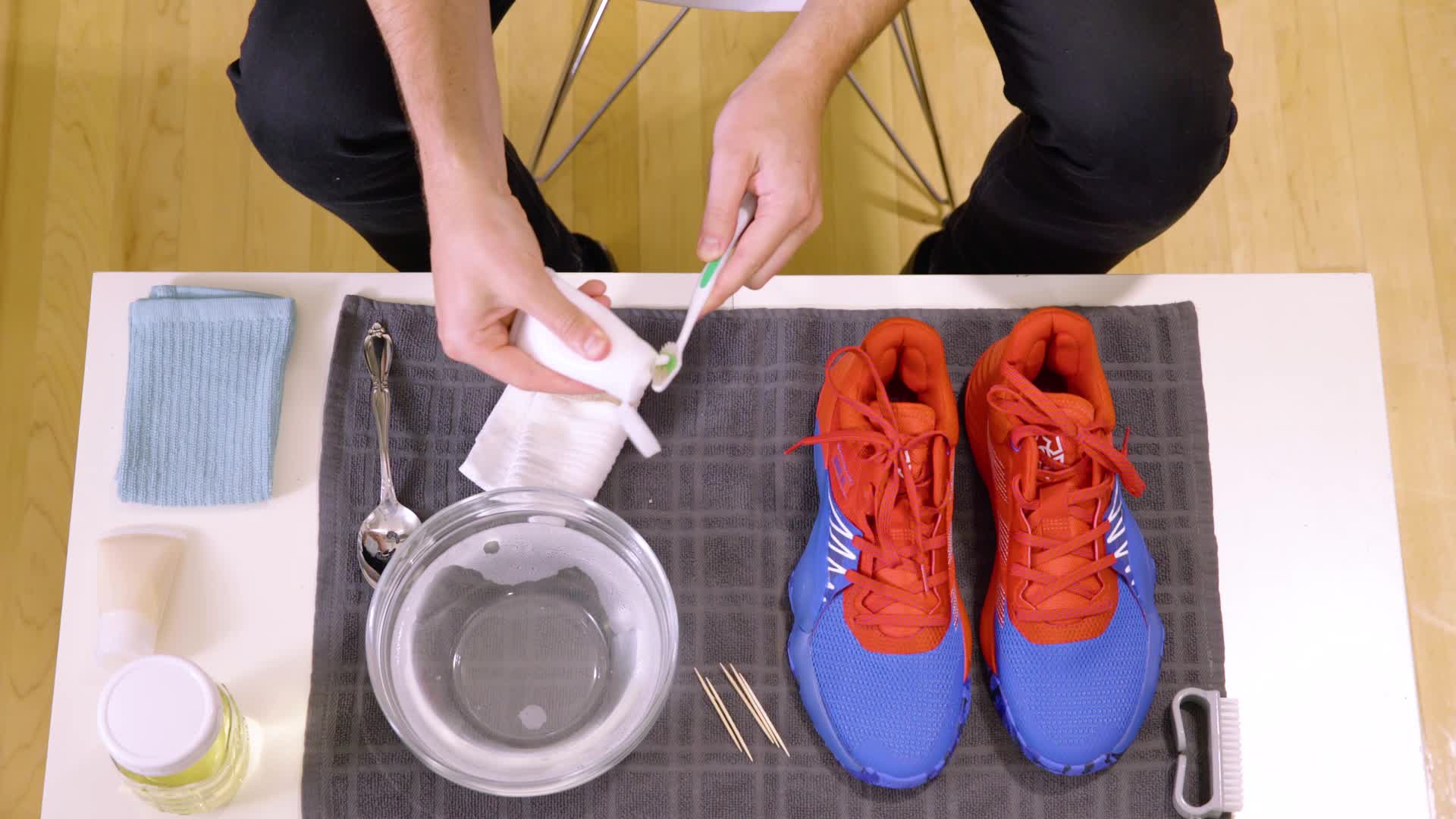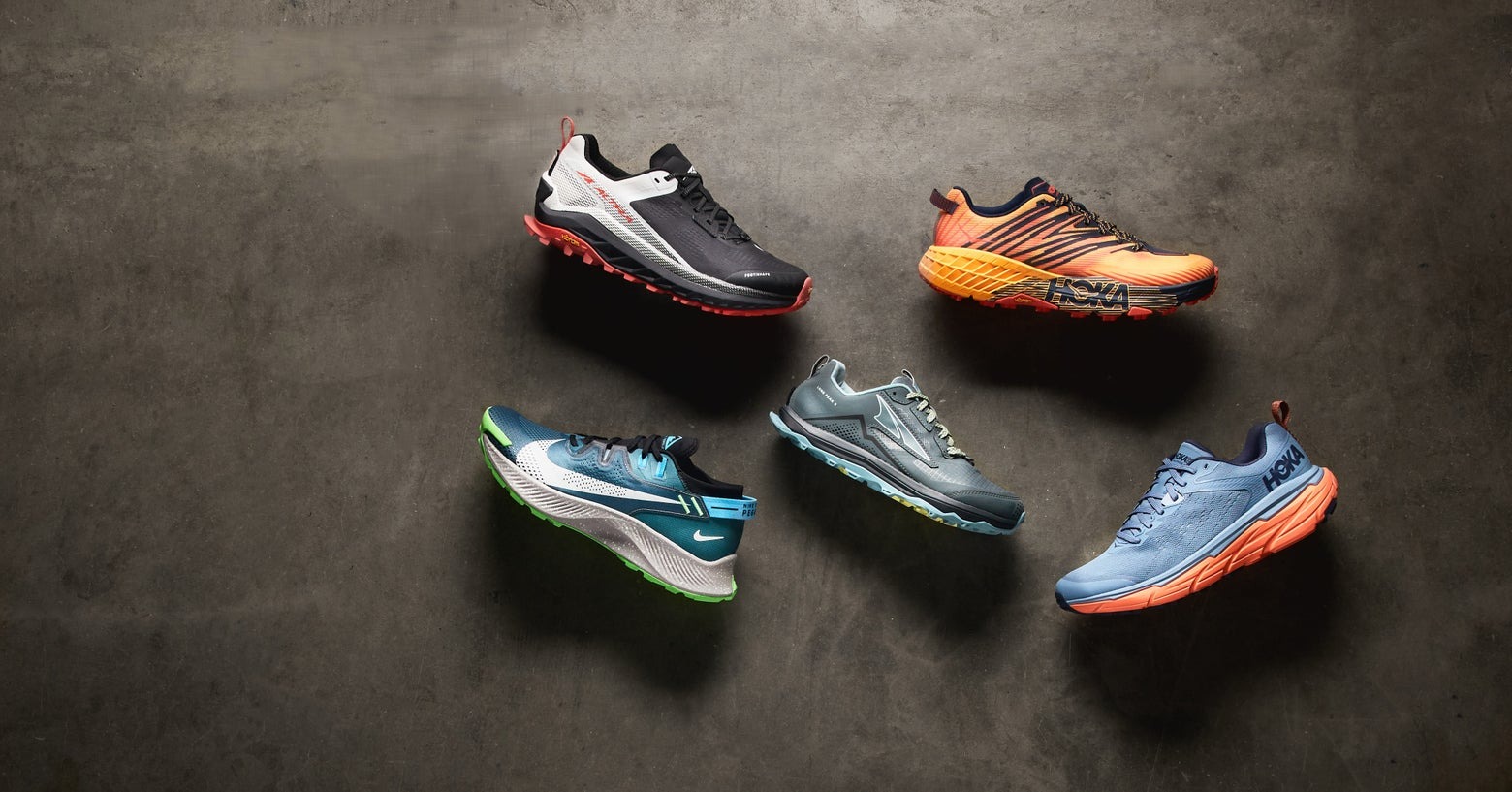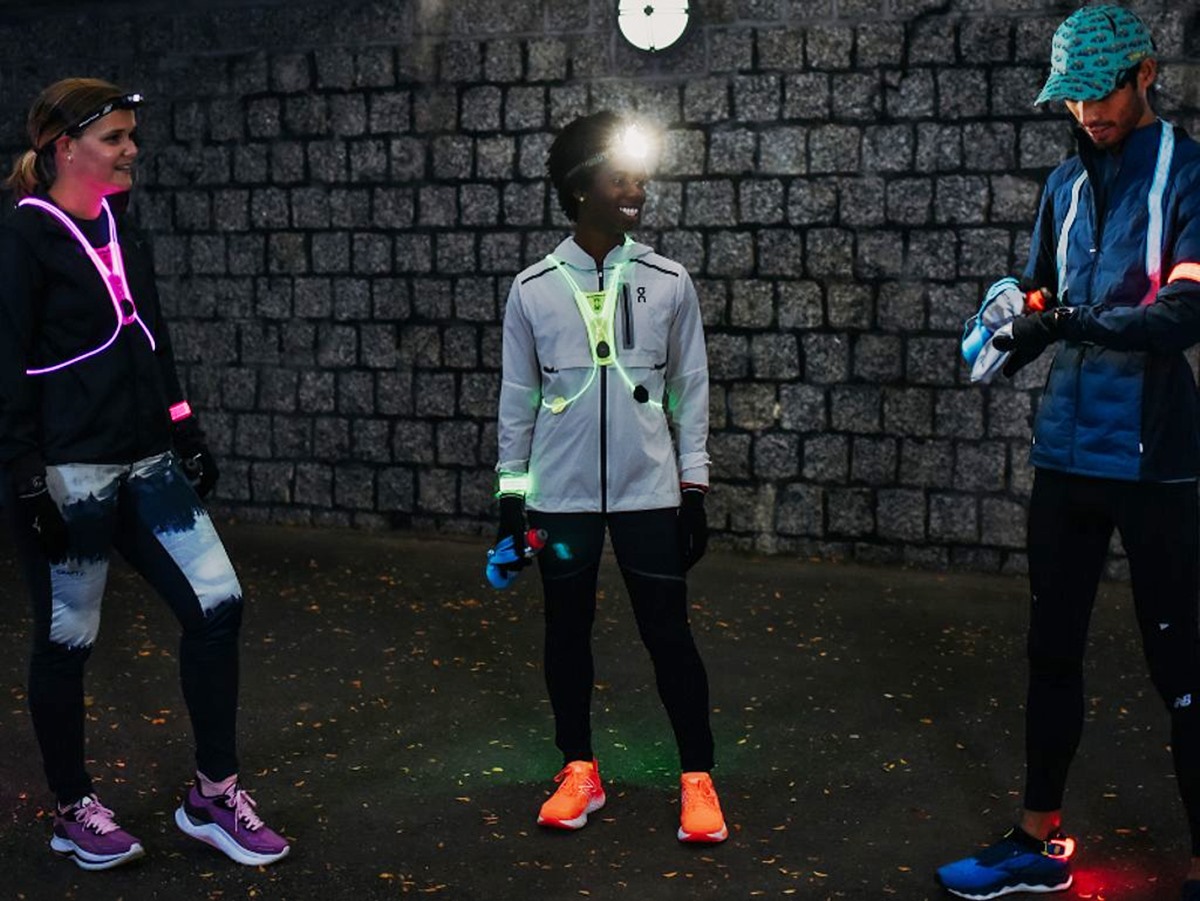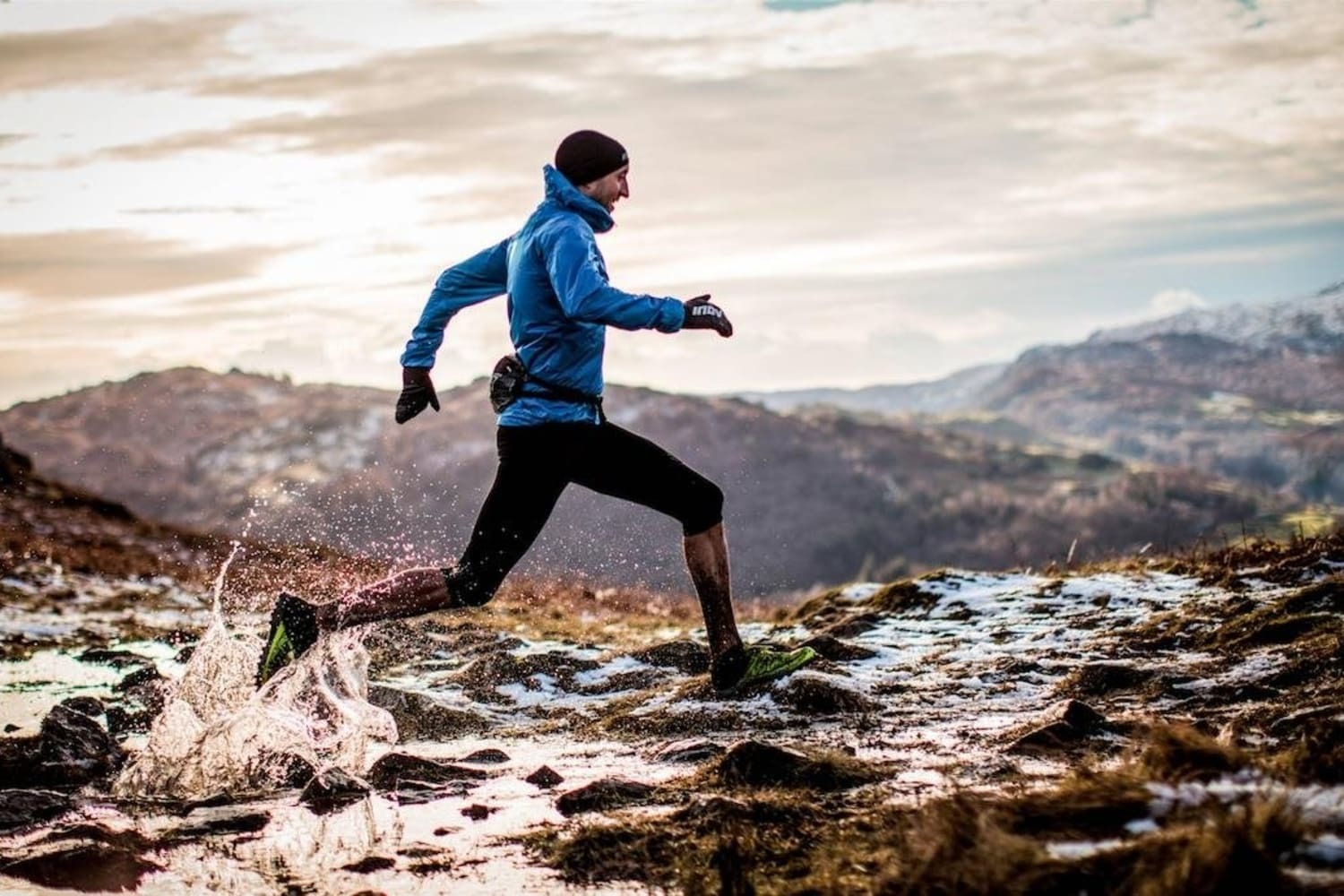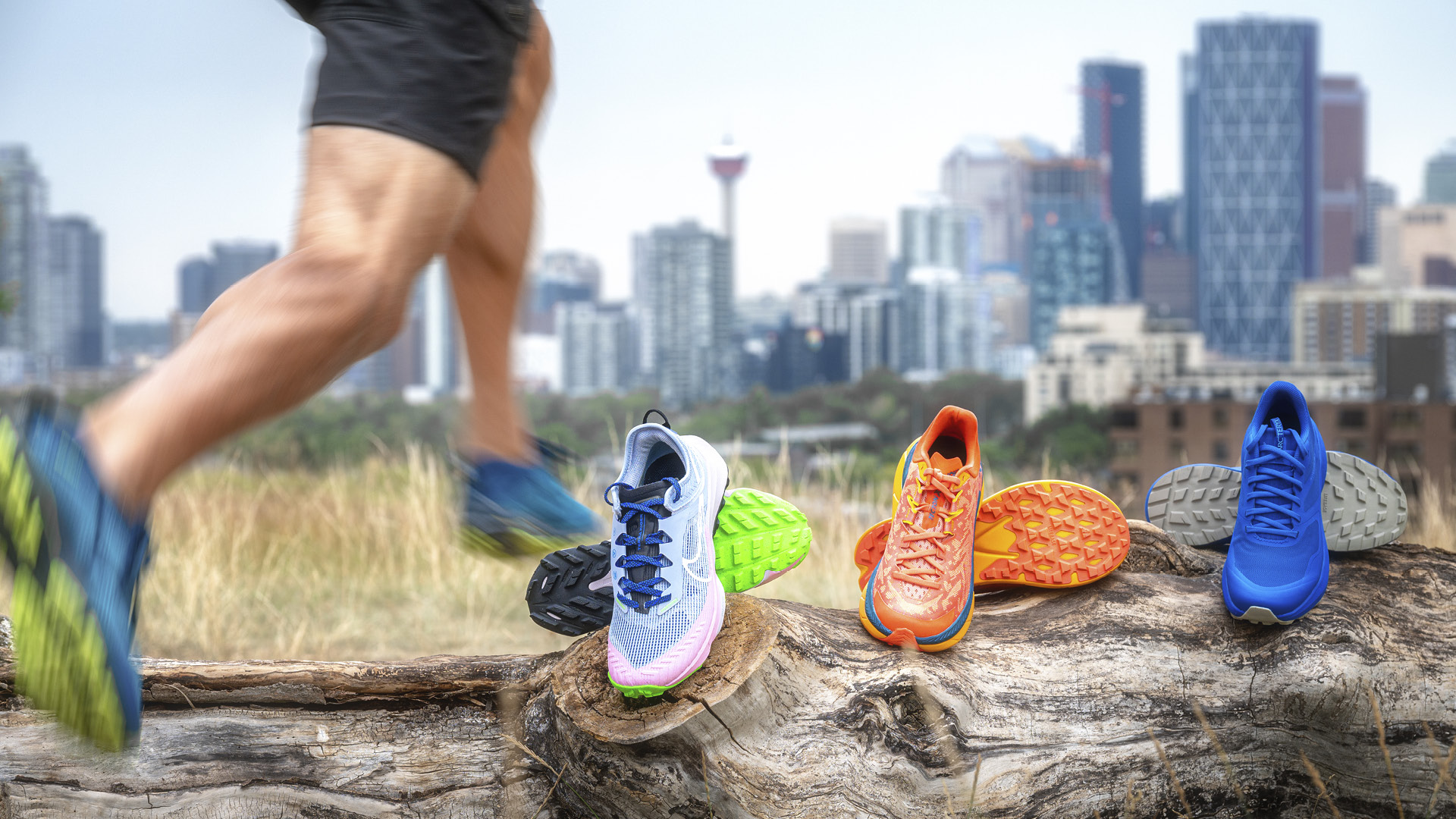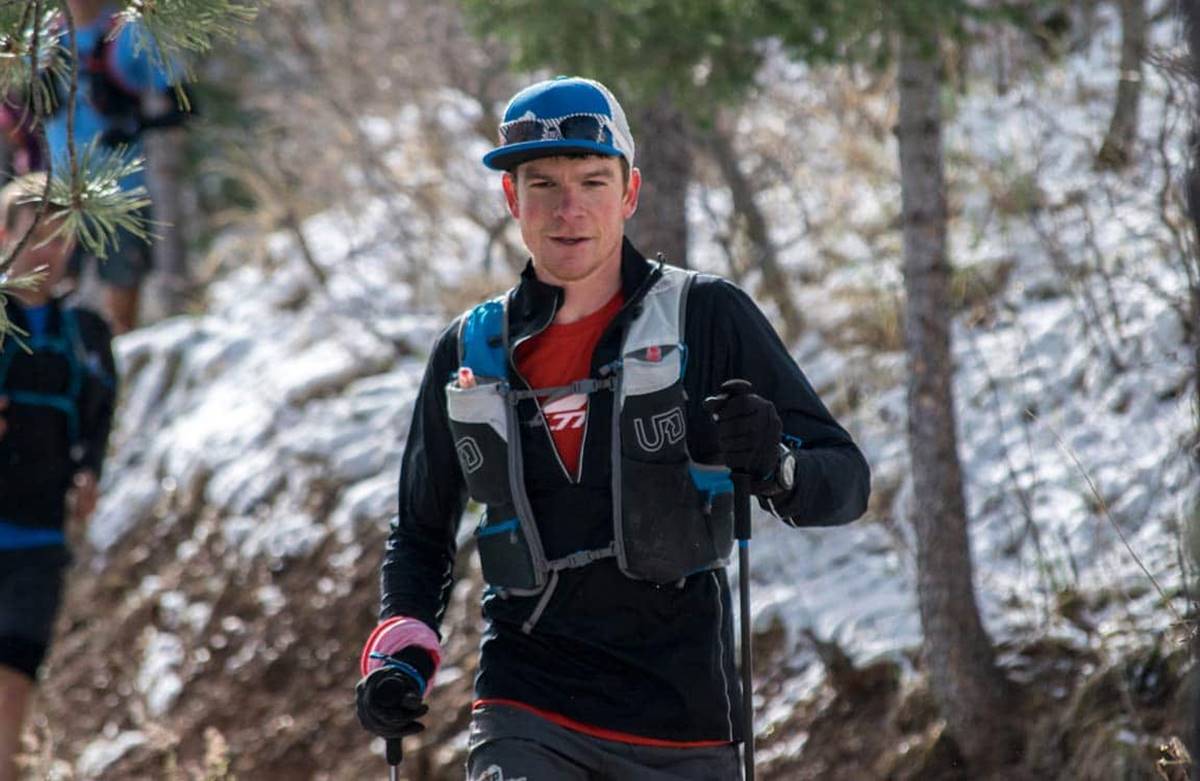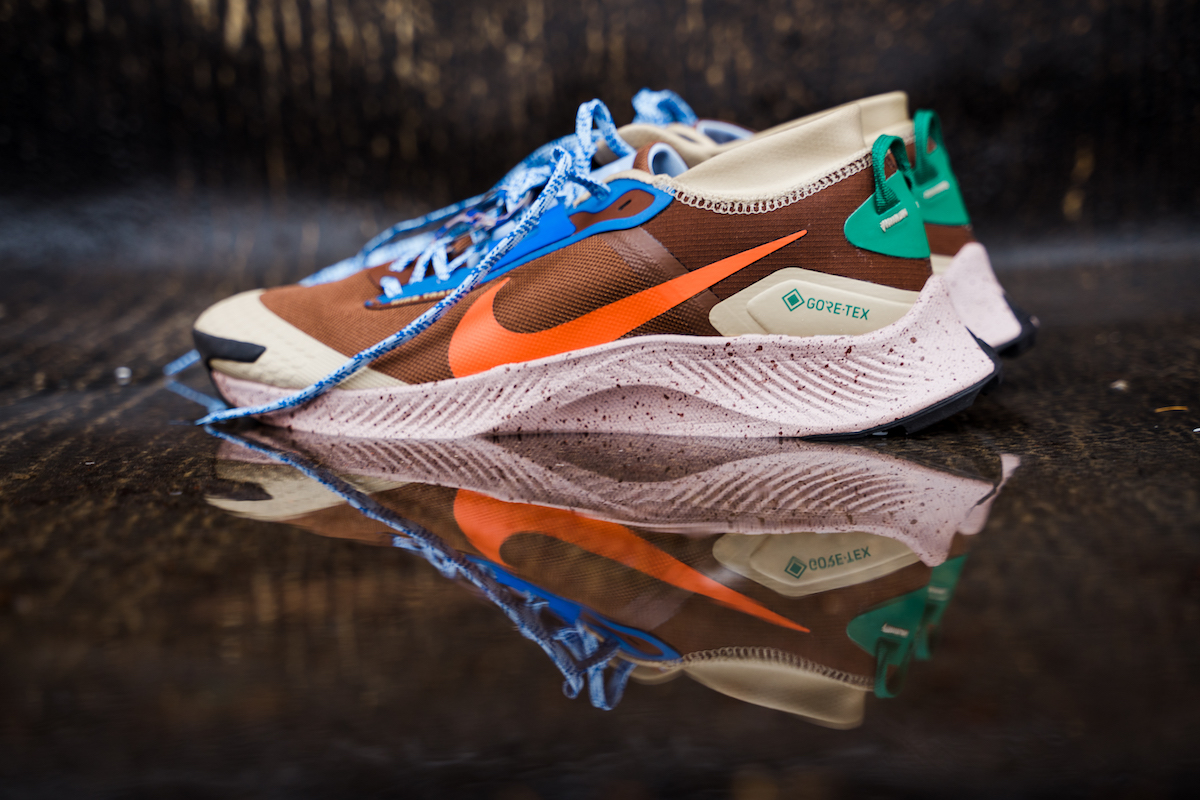

Featured
How To Waterproof Running Shoes
Published: August 12, 2023
Discover the best techniques to waterproof your running shoes and keep your feet dry on your next outdoor adventure. Getfeatured expert tips now.
Introduction
When it comes to outdoor activities, having the right gear is crucial. Whether you’re an avid runner who hits the trails rain or shine, or you simply want to keep your feet dry during your daily jog, investing in a pair of waterproof running shoes can make a world of difference. Waterproof running shoes are designed to protect your feet from getting wet, keeping you comfortable and reducing the risk of blisters or other foot-related issues.
While regular running shoes may offer some level of water resistance, they may not be able to withstand heavy rain or wet conditions for an extended period. This is where waterproof running shoes come in, providing a higher level of protection against moisture and keeping your feet dry even in the most challenging weather conditions.
Not only do waterproof running shoes keep your feet dry, but they also offer additional benefits such as improved durability and breathability. These shoes are typically made with a waterproof membrane that is both flexible and breathable, allowing your feet to stay dry and comfortable while still allowing for airflow.
In this article, we will explore the importance of waterproof running shoes, discuss different methods to waterproof your shoes, and provide tips on how to maintain them. By the end, you’ll have all the knowledge you need to make an informed decision and keep your feet comfortable and dry during your runs.
Why Waterproof Running Shoes are Important
When it comes to running in wet or rainy conditions, having waterproof running shoes can make a significant difference in your comfort and performance. Here are a few reasons why waterproof running shoes are important:
- Keep your feet dry: The primary purpose of waterproof running shoes is to keep your feet dry, even in wet conditions. Running with wet feet can be uncomfortable and can increase the risk of blisters and other foot-related issues.
- Improved traction: Waterproof running shoes are designed with specialized outsoles that provide better traction on wet surfaces. This can help prevent slips and falls, allowing you to maintain a steady pace and reduce the risk of injury.
- Protection from the elements: Rain, mud, and puddles can pose a challenge for runners, but waterproof shoes offer a layer of protection. They keep water and debris from seeping into your shoes, keeping your feet clean and protected during your run.
- Long-lasting durability: Waterproof running shoes are made with durable materials that can withstand the rigors of running in wet conditions. They are designed to resist water penetration and maintain their integrity even after repeated exposure to moisture.
- Improved breathability: Despite being waterproof, these shoes are engineered to be breathable. The waterproof membrane allows sweat and moisture to escape, preventing your feet from becoming hot and sweaty during your run.
By investing in a pair of reliable waterproof running shoes, you can ensure that your feet stay dry, comfortable, and well-protected throughout your running adventures, regardless of the weather conditions.
Different Methods to Waterproof Running Shoes
There are several methods you can use to waterproof your running shoes, depending on your preference and the materials of your shoes. Here are some popular methods:
- Using Waterproof Sprays: One of the easiest and most common methods is to use waterproof sprays. These sprays contain a water-repellent solution that can be applied directly to the shoes. Simply spray the solution evenly onto clean and dry shoes, making sure to cover all areas. Allow the shoes to dry completely before wearing them. Waterproof sprays are easy to use and can provide effective protection against moisture.
- Applying Waterproof Wax: Another method is to use waterproof wax. This method is especially effective for leather or suede shoes. Apply the wax evenly onto the shoes using a clean cloth or brush, making sure to cover all areas. Gently rub the wax into the material and allow it to dry. Once dry, use a clean cloth to buff the shoes to a desired shine. The wax creates a protective barrier against water and keeps your feet dry.
- Using Waterproofing Products: There are specialized waterproofing products available in the market specifically designed to waterproof running shoes. These products usually come in the form of gels or creams that can be applied to the shoes. Follow the manufacturer’s instructions for application and make sure to cover all areas of the shoes. These products are designed to provide long-lasting waterproofing protection.
It’s important to note that while these methods can help make your running shoes more resistant to water, they may not make them completely waterproof. The level of water resistance may also vary depending on the quality of the products used and the materials of the shoes.
It’s always a good idea to test the effectiveness of any waterproofing method before going on a long run in wet conditions. Simply splash some water onto the shoes and observe if it beads up and rolls off, indicating that the waterproofing is working.
By using these methods, you can enhance the water resistance of your running shoes and ensure that your feet stay dry and comfortable during your runs, regardless of the weather.
Using Waterproof Sprays
One of the most convenient and effective methods to waterproof your running shoes is by using waterproof sprays. These sprays are designed to create a protective barrier that repels water and keeps your shoes dry. Here’s a step-by-step guide on how to use waterproof sprays:
- Clean your shoes: Start by cleaning your running shoes thoroughly. Remove any dirt or debris that may be stuck to the surface. Use a soft brush or cloth to gently scrub the shoes and ensure they are free from any grime. Allow them to dry completely before proceeding to the next step.
- Choose the right spray: There are various waterproof sprays available in the market, so it’s important to choose one that is suitable for your shoe material. Read the label and make sure the spray is compatible with your running shoes.
- Apply the spray: In a well-ventilated area or outdoors, hold the spray canister approximately 6-8 inches away from your shoes. Begin spraying the solution evenly across the surface of the shoes. Make sure to cover all areas, including the upper, the tongue, and the seams. Take your time to ensure thorough coverage.
- Let it dry: After applying the spray, allow your shoes to dry completely. This may take a few hours, depending on the weather conditions and the type of spray used. Avoid wearing the shoes until they are completely dry to allow the waterproof layer to set in.
- Reapply if necessary: Depending on the quality of the spray and the frequency of your runs, you may need to reapply the waterproof spray every few months. This will ensure that your shoes maintain their water-repellent properties and continue to keep your feet dry.
Using waterproof sprays is a convenient and cost-effective way to enhance the water resistance of your running shoes. However, it’s important to note that the effectiveness of the spray may vary depending on the quality of the product and the materials of your shoes. It’s always a good idea to test the waterproofing before heading out in wet conditions to ensure that your shoes provide the necessary protection.
Remember, properly maintaining and reapplying the waterproof spray will help extend the lifespan of your running shoes and keep them performing at their best, regardless of the weather.
Applying Waterproof Wax
If you have leather or suede running shoes, applying waterproof wax can be an effective method to protect them from water damage. Waterproof wax creates a barrier that repels water and keeps your shoes dry. Here’s a step-by-step guide on how to apply waterproof wax:
- Clean your shoes: Start by cleaning your shoes to remove any dirt or dust. Use a soft brush or cloth to gently wipe the surface of your shoes. Make sure they are completely dry before applying the wax.
- Choose the right wax: Look for a waterproof wax that is specifically designed for leather or suede shoes. Make sure to read the instructions and choose a wax that is suitable for your shoe material.
- Apply the wax: Take a clean cloth or a soft brush and scoop a small amount of wax from the container. Apply the wax evenly onto the shoes, covering all areas. Make sure to work the wax into the material, paying extra attention to the seams and any areas that are prone to water penetration.
- Dry and buff: Allow the shoes to dry naturally after applying the wax. Once dry, take a clean cloth and gently buff the shoes to remove any excess wax. This will help create a smooth and polished finish.
- Reapply if necessary: Depending on how often you wear your shoes and the weather conditions you encounter, you may need to reapply the waterproof wax every few months. Regularly inspect your shoes for signs of wear and reapply the wax as needed.
Applying waterproof wax is a great way to protect your leather or suede running shoes from water damage. The wax creates a barrier that repels water, keeping your feet dry and your shoes in good condition. However, it’s important to note that applying wax may slightly alter the appearance of your shoes, so it’s recommended to test the wax on a small, inconspicuous area before applying it to the entire shoe.
By properly applying and maintaining waterproof wax, you can prolong the life of your leather or suede running shoes and ensure that they continue to provide the necessary protection, even in wet conditions.
Using Waterproofing Products
In addition to waterproof sprays and waxes, there are various waterproofing products available in the market specifically designed to protect your running shoes from water damage. These products are typically in the form of gels or creams that create a protective barrier on the shoe’s surface. Here’s a step-by-step guide on how to use waterproofing products:
- Clean your shoes: Start by cleaning your running shoes to remove any dirt or debris. Use a soft brush or cloth to gently wipe the surface and make sure the shoes are dry before proceeding.
- Choose the right product: Look for a waterproofing product that is suitable for the material of your shoes. Read the instructions provided by the manufacturer to ensure proper usage.
- Apply the product: Take a small amount of the waterproofing product and apply it evenly onto the surface of your shoes. Use a clean cloth or sponge to spread the product, ensuring complete coverage. Pay attention to the seams and any areas that are prone to water penetration.
- Allow drying time: Let your shoes dry naturally after applying the waterproofing product. The drying time may vary depending on the product, so refer to the instructions for guidance. Avoid wearing the shoes until they are fully dry.
- Repeat if necessary: Depending on the product and the weather conditions you encounter, you may need to reapply the waterproofing product periodically. Monitor the water repellency of your shoes and reapply the product as needed.
Waterproofing products are designed to create a protective barrier on your running shoes, preventing water from seeping in and keeping your feet dry. These products provide an additional layer of protection, especially in wet conditions.
It’s important to note that the effectiveness and durability of waterproofing products may vary depending on the quality of the product, the material of your shoes, and the frequency of use. Regularly assess the water resistance of your shoes and reapply the waterproofing product as necessary to maintain their effectiveness.
By using waterproofing products, you can further enhance the water resistance of your running shoes and ensure that your feet stay dry and comfortable during your runs, regardless of the weather.
Choosing the Right Socks for Waterproofing
While waterproof running shoes play a crucial role in keeping your feet dry, choosing the right socks is equally important. The right socks can enhance the waterproofing capabilities of your shoes and provide additional comfort and protection. Here are a few considerations to keep in mind when selecting socks for waterproofing:
- Material: Opt for socks made from moisture-wicking materials such as merino wool or synthetic blends. These materials are designed to pull moisture away from your skin, keeping your feet dry and reducing the risk of blisters. Avoid cotton socks as they tend to retain moisture, which can make your feet feel damp and uncomfortable.
- Thickness: Choose socks with medium to thick cushioning for better insulation and protection. Thicker socks provide an extra layer of cushioning and can help prevent chafing and blisters. However, make sure the socks are not too thick that they make your shoes feel tight or constrictive.
- Fit: Look for socks that fit snugly but not too tight. A proper fit ensures that the socks stay in place and do not bunch up or slide down during your run. Avoid socks that are too loose as they can create friction and discomfort.
- Height: Consider the height of the socks based on your preference and the weather conditions. Ankle socks are suitable for warmer weather, while crew or knee-high socks provide added protection against rain, mud, and debris.
- Seamless construction: Look for socks with seamless construction or smooth toe seams to minimize friction and irritation. This can help prevent blisters and ensure a comfortable running experience.
It’s important to note that even with the right socks, the effectiveness of waterproofing may vary depending on the quality of your running shoes and the waterproofing method used. However, investing in high-quality socks that are designed for moisture management can significantly enhance the overall comfort and effectiveness of your waterproof running shoes.
Consider trying out different brands and styles of socks to find the ones that work best for you. Remember to properly care for your socks by washing them according to the instructions to maintain their performance and durability.
By choosing the right socks for waterproofing, you can create a comfortable and dry environment for your feet, allowing you to enjoy your runs without the discomfort of wet socks and potential foot-related issues.
Tips for Maintaining Waterproof Running Shoes
To ensure the longevity and effectiveness of your waterproof running shoes, it’s important to follow proper maintenance practices. Here are some helpful tips for maintaining your waterproof running shoes:
- Clean after each use: After each run, take the time to clean your shoes to remove any dirt, mud, or debris. Use a soft brush or cloth to gently scrub the surface of your shoes. This will help prevent any buildup that could compromise the waterproofing.
- Air dry: Allow your shoes to air dry after each use. Avoid exposing them to direct heat sources like radiators or dryers as this can damage the materials of the shoes. Instead, place them in a well-ventilated area and let them dry naturally.
- Reapply waterproofing as needed: Over time, the water-resistant coating on your shoes may wear off. Depending on the frequency of use and the conditions you run in, you may need to reapply a waterproofing spray or wax to maintain the water resistance. Regularly assess the water repellency of your shoes and reapply as necessary.
- Store properly: When you’re not using your waterproof running shoes, store them in a cool and dry place. Avoid leaving them in direct sunlight or in areas with high humidity or extreme temperatures. Proper storage helps in preserving the integrity and performance of the shoes.
- Avoid machine washing: While it may be tempting to toss your shoes in the washing machine, this can damage the waterproofing and materials of the shoes. Instead, hand wash your shoes using a mild detergent and lukewarm water. Gently scrub them and rinse thoroughly. Allow them to air dry.
- Rotate your shoes: To prolong the life of your waterproof running shoes, consider rotating them with another pair. This allows each pair to fully dry and recover after each use, reducing the chances of moisture buildup and prolonging their water resistance.
- Properly lace and tighten: Ensure that your shoes are properly laced and tightened before every run. This helps in preventing water from entering through the gaps and keeps your feet dry.
- Regular maintenance: Inspect your shoes regularly for any signs of wear or damage. Replace worn-out insoles or laces, and address any tears or rips in the materials. Regular maintenance will ensure that your shoes continue to provide the necessary protection.
By following these maintenance tips, you can extend the lifespan of your waterproof running shoes and optimize their performance. Proper care and maintenance will help keep your feet dry, comfortable, and protected during your runs, allowing you to enjoy your outdoor adventures to the fullest.
Conclusion
Investing in a pair of waterproof running shoes is a smart choice for anyone who enjoys running in wet or rainy conditions. These shoes provide the necessary protection to keep your feet dry, comfortable, and protected from water-related issues. By following the proper methods of waterproofing, such as using waterproof sprays, applying waterproof wax, or using specialized waterproofing products, you can enhance the water resistance of your running shoes.
In addition to waterproofing, choosing the right socks made from moisture-wicking materials and maintaining your shoes properly are important factors in maximizing the waterproofing capabilities and overall longevity of your running shoes. Regular cleaning, proper storage, and periodic reapplication of waterproofing solutions will help keep your shoes in optimal condition and extend their lifespan.
Remember, while waterproof running shoes provide a higher level of protection against moisture, no shoe is completely invulnerable to water. It’s always a good idea to test the effectiveness of the waterproofing methods and to exercise caution when running in extremely wet or waterlogged conditions.
By prioritizing the care and maintenance of your waterproof running shoes, you can ensure that your feet stay dry and comfortable during your runs, allowing you to focus on your performance and enjoy the experience, regardless of the weather conditions.
